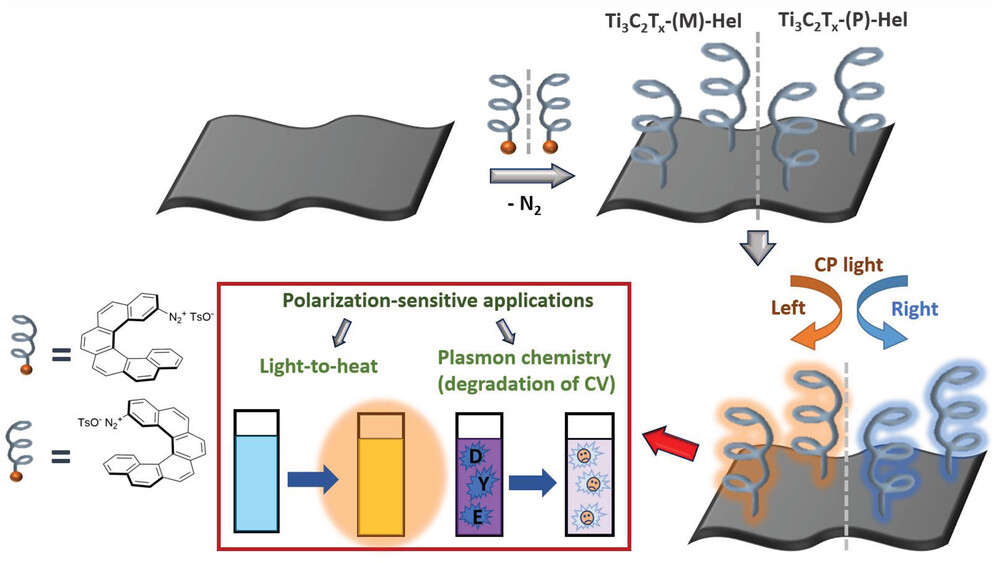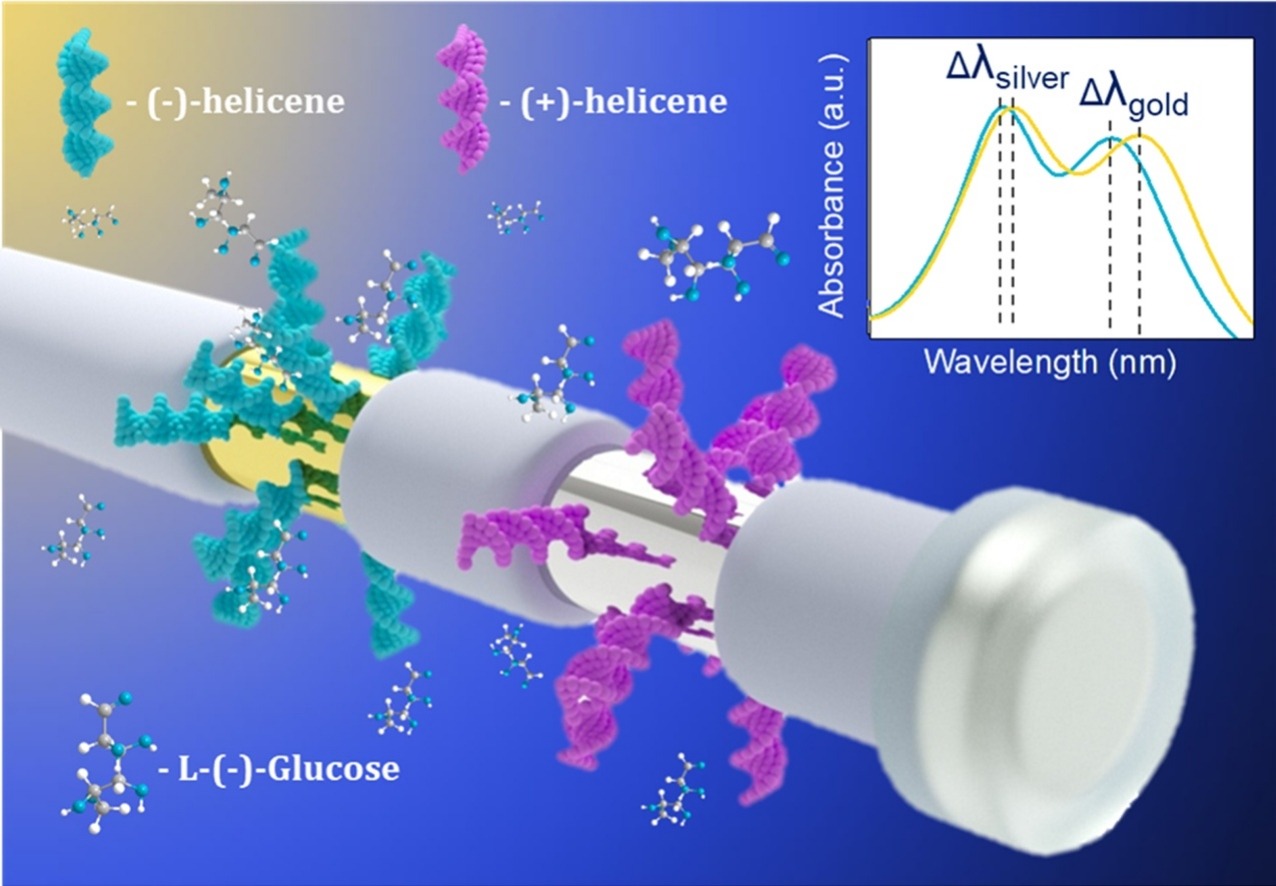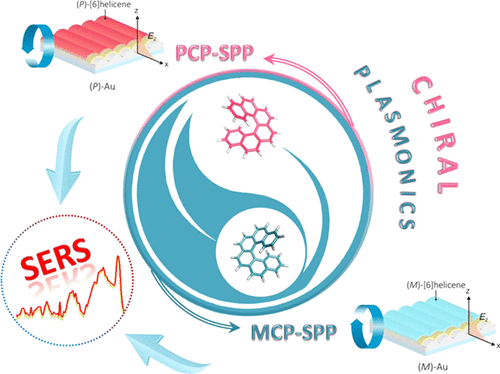Chiral Plasmonics
A special place in our research of various sensors is reserved for the utilization of helicenes in chiral plasmonics. Unlike common detection methods, Surface-enhanced Raman Spectroscopy (SERS) represents an extremely sensitive method for the detection of substrates in concentrations as low as 10-13 M. The sensor is constructed by sorption, or chemical attachment of enantiomerically pure helicene molecule onto a nanostructured metal substrate, most often made of gold or silver. This setup allows for an interaction between the molecule of the chiral analyte and of the helicene, which in turn causes a change in the Raman response of the system.
These systems can be extensively tuned for various applications and analytes, by changing the structure and electronic properties, by variation of the contact between the metal surface and helicene, and also by engineering the surface of the metal. Our goal is to be able to distinguish between enantiomers of complex chiral compounds, especially those of biological relevance.
 |
 |
 |
- Helicene-SPP-Based Chiral Plasmonic Hybrid Structure. ACS Appl. Mater. Interfaces 11, 1555–1562, 2019. DOI
- Chiroplasmon-active optical fiber probe. Sens. Actuators B Chem. 343, 130122, 2021. DOI
- Chiral Plasmonic Response of 2D Ti3C2Tx Flakes. Adv. Funct. Mater. 2023, 2212786, 2023. DOI
- Chiral nanoparticles with chiral helicene. Sens. Actuators B Chem. 394, 134332, 2023. DOI